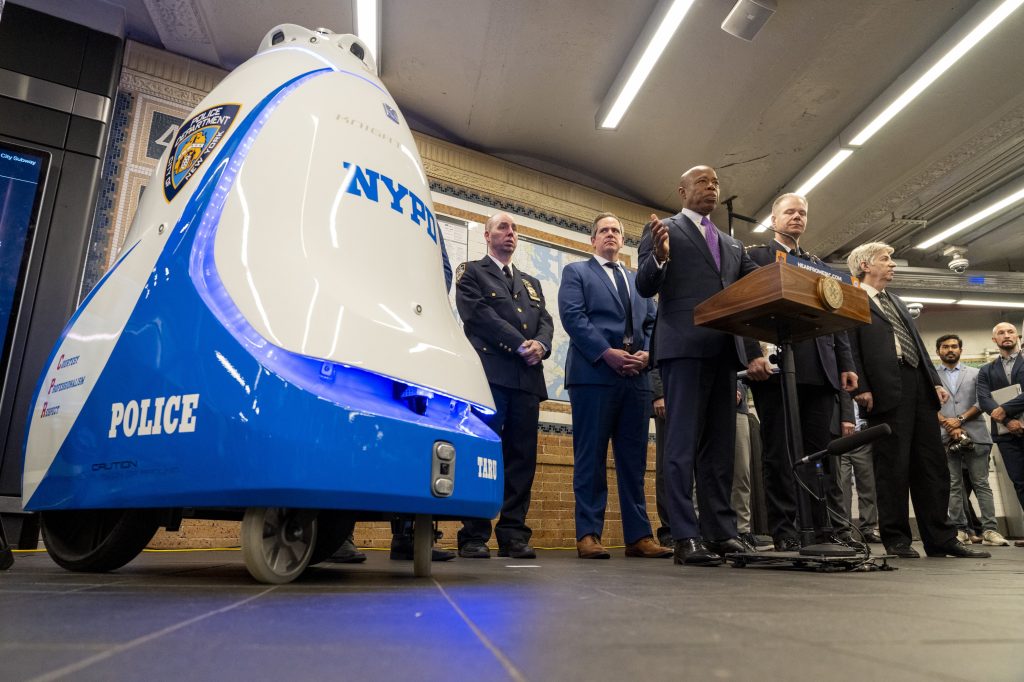Politicians, at least in the U.S., are often criticized for being out of touch with basic technology. However, what happens when things go too far in the other direction? What happens when a politician attempts to over-rely on unproven tech to solve their problems?
New technology, correctly deployed, can obviously be a boon to any city, but in New York City, Mayor Eric Adams is on a long streak of tech missteps, showcasing what debacles can unfold when leaders don’t understand what can go wrong.
NYC’s AI chatbot for businesses
On Friday, three nonprofit news organizations – The Markup, Documented, and The City – copublished a scathing report by reporter Colin Lecher about the AI chatbot that has been deployed by Mayor Adams and the NYC government.
When Mayor Eric Adams announced the “New York City Artificial Intelligence Action Plan” in October of last year, the city touted it as a “first-of-its-kind plan for responsible artificial intelligence use In NYC government.” The announcement spotlighted a very specific part of the plan, the “first citywide AI chatbot” which would be deployed on official NYC government business websites in order to help business owners “access trusted information.” The chatbot is powered by Microsoft’s Azure AI service.
However, Lecher discovered that the AI chatbot is instead telling NYC business owners to break the law.
Lecher’s report provided example after example of the AI chatbot giving the wrong advice to very basic questions. For example, when prompted with relevant questions, the chatbot told Lecher that business owners can take a cut of their service worker’s tips — which they legally cannot — that landlords can discriminate against tenants based on income — which is against the law — and that you can run a cashless store in NYC — which is also illegal.
Robot subway surveillance
Late last year, Mayor Adams announced a pilot program for a new 400-pound, security camera-equipped, egg-shaped robot named K5 that would patrol the Times Square subway station.
K5 was described as a “fully autonomous outdoor security robot” by its creators, a company called Knightscope. However, as the New York Daily News reports, the robot was accompanied by two human NYPD police officers at all times. Adams expressed concerns that K5 would be vandalized, but meanwhile, civil rights groups expressed very different concerns regarding privacy for everyday New Yorkers, and wondered whether controversial facial recognition technology would be deployed in K5 eventually.
As the New York Times reported last year, legal experts also believed that the surveillance robot violated the Public Oversight of Surveillance Technology Act, “a city law requiring the department to publish details about how new technology is being used and the data it collects.”
But, how did the K5 pilot go? Well, K5 patrolled the Times Square subway station for two months and then was put away in a city storage facility by the end of 2023 – even though NYC was paying Knightscope for a 6-month long contract.
Robot police dogs
Speaking of robotics, K5 wasn’t the first time NYC experimented with the technology for policing.
In 2021, the NYPD canceled a nearly six-figure contract with the robotics company Boston Dynamics for robot police “Digidogs” after public outcry against the technology. Then-Mayor Bill de Blasio agreed with the move, calling the robot dogs “creepy” and “alienating.”
At the time, Mashable published a report detailing the emergency stop procedure to power-down the robot dog in the event of a scenario where it would need to be deployed.
However, it appears Mayor Adams doesn’t share his predecessor de Blasio’s sentiments on the Digidog. Last year, Mayor Adams announced that the NYPD would be bringing back the robot police dogs, and that the city acquired two “Spot” models for $75,000 each.
Civil rights groups and privacy advocates have shared the same concerns regarding the robot dogs that they did about K5.
Subway weapons detectors
The latest example of Mayor Adams’ questionable reliance on new, unproven technology comes in the form of the recently announced initiative to use weapons detectors at subway stations.
This week, Mayor Adams announced that they would deploy AI-powered metal detectors that can scan for weapons. These scanners are created by a Massachusetts-based company called Evolv.
These devices are an interesting choice for the NYC subway system because Evolv’s CEO himself said earlier this month, before the Mayor’s announcement, that these scanners would not work well in the subway system.
During an investor call, Evolv CEO Peter George was specifically asked about using these scanners in NYC subway stations, according to a report by the New York Daily News.
“Subways in particular are not a place that we think is a good use-case for us,” the Evolv CEO said. “Both for the [concept of operations], and being below ground and interference with the railways — [subways are] not a great use-case.”
Furthermore, Evolv has just recently been sued by its shareholders for overstating the effectiveness of its scanning technology. The SEC also launched an investigation into the company last month. In addition, the FTC is looking into Evolv due to its marketing practices. And the company has been forced to retract claims it made about testing its technology in the UK.
Other apparent lapses in tech judgment
Mayor Adams has taken other risky bets too, like with cryptocurrency. He’s been a fairly outspoken advocate for the technology. Adams converted his first mayoral paychecks into cryptocurrency, touted how he would look into blockchain technology as solutions to the city’s problems, and even dined with FTX founder and CEO Sam Bankman-Fried.
While Mayor Adams’ cryptocurrency portfolio may be up now assuming he held onto his holdings, any hard-up constituent who followed his lead and needed to sell during last year’s “crypto winter” would be down big. As for Sam Bankman-Fried, the FTX head was just sentenced to 25 years in federal prison on conspiracy and fraud charges related to his now-failed crypto exchange.
As these examples show, Mayor Adams has repeatedly relied on unproven, sometimes risky technology as solutions to the city’s issues. Time after time, these tax-payer funded programs haven’t panned out, and the 8 million people living in the city have to deal with the consequences.
Mashable has reached out to Mayor Adams’ office for comment, but did not immediately hear back. We will update if we receive a reply.






